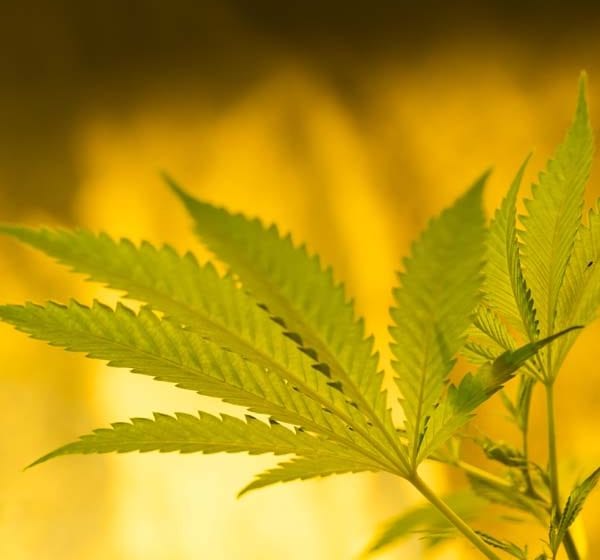The legalization of cannabis may prove to be a transformational development for the tobacco industry.
By Shane MacGuill
Socially, culturally and practically, cannabis and tobacco have long had a symbiotic relationship. The emergence of recreational cannabis use occurred around the same time tobacco consumption became mainstream. Millions of cannabis joints have incorporated millions of cigarettes. And for decades, one has been associated with the other through the gateway effect (initially tobacco as gateway to cannabis but latterly, in the U.S. at least, indications of the reverse: cannabis use as tobacco cessation). They have also been disdained in tandem.
However, the corporate relationship between the tobacco industry and a putative legal cannabis segment has often been uneasy and rarely reflected the simple cliche of the Marlboro Marijuana. Until very recently, tobacco companies have never spoken openly about involvement in a legal cannabis industry except to foreswear any interest or plans, while internally there has often been a genuine lack of consensus about whether legally available cannabis represents competition, complementarity or opportunity for the industry. As the industry’s own regulatory complexity and reputational difficulties have grown along with the size of the legal cannabis prize, this lack of consensus can only have deepened. What is clear is that any future tobacco industry involvement in legal cannabis will be multifaceted and considered rather than direct and bombastic.
Given the aforementioned Marlboro Marijuana, it is perhaps appropriate that Philip Morris USA’s parent company Altria has made the first substantive forays into legal cannabis on the part of tobacco brand owners, with its recent $1.8 billion investment in Canadian licensed producer Cronos Group. The future, however, is far from the cliche. Altria’s virtually synchronous investment in the U.S.’ leading nicotine vapor brand, Juul, points to a synergistic destiny in which tobacco companies have morphed into pleasure substance providers and are using technology, such as vaporization—to deliver a range of substances (nicotine, cannabis and potentially beyond) responsibly to consumers.
Why tobacco should be interested …
But first, the fundamentals. There are a number of compelling reasons that support the interest and involvement of the tobacco industry in legal cannabis. There are also some challenges to raise.
Beginning with the supportive factors, in markets across the world, whether cannabis is legal or illegal, many cannabis consumers are also tobacco or nicotine users. In legal markets, many tobacco users will choose to experiment. This means that the industry can add value by meeting its consumers where they are. Further, as will be elaborated on below, some of the consumption missions for tetrahydrocannabinol (THC) and cannabidiol (CBD) overlap with the motivators for tobacco and nicotine use—stress relief, relaxation and social signaling.
Like tobacco, cannabis is (currently at least) a seed to the value-added product industry, which involves the cultivation, processing and compilation of consumer products. It is also one that is likely, over time, to see price points for raw cannabis leaf declining. The tobacco industry possesses expertise in the efficient and cost-focused production of materials in an agricultural supply chain, controlling costs and driving margins on the finished product.
While there are a range of eventual scenarios in terms of cannabis regulation (with regimes varying across the regions), it is certain that in several it will tend toward the more restrictive. Legal cannabis legislation will require substantial compliance procedures and efficiency, something that is the cornerstone of current tobacco business. Specific tobacco industry expertise such as that related to track and trace is also likely to be highly valuable in a cannabis context.
Finally, a corollary both of overlap with the tobacco industry’s current consumption profile and its experience of operating in heavily restricted environments is the unique toolset and capability it provides tobacco businesses to build brands within the cannabis space. The legal cannabis segment will be driven forward both by niche, specialist producers and the development of large, mainstream brands with limited room for maneuver—the latter being ripe for the contribution of tobacco companies.
Conversely, the current barriers to entry for tobacco companies revolve around the partial legislative environment, lack of final consensus on harms and the robust competition in legal cannabis.
While, in the longer term, the extent of regulation governing legal cannabis will give the industry, with its institutional knowledge of compliance, a competitive advantage, in the near term, partial regulation mitigates against major company involvement. The industry’s eagerness to be seen to act with integrity is amplified even further as it seeks to transition into a reduced-risk product environment. Many within the industry are likely to calculate that becoming involved in the sale or marketing of cannabis without more widespread scientific, cultural and political consensus on its appropriate regulation would only set back its wider strategic priorities.
While there is also a general—and generally accurate—perception that marijuana consumption is less harmful than tobacco, or indeed even alcohol use, partly due to its prohibition, some areas remain unresolved. Marijuana smoke (created by the predominant delivery mechanism) is in itself of course a carcinogen, while there are significant, documented concerns regarding the impact of use of marijuana on the mental health of some users, particularly younger ones. These perceived ambiguities may sit rather uncomfortably with the quest for precision in which the industry is engaged regarding the characteristics of its reduced-risk nicotine-delivery platforms.
Finally, much as legal cannabis is likely to be attractive to the industry, it will also be attractive to other industries, significantly sharpening the competition that tobacco companies can expect. Most notably, there is a substantial interplay with alcoholic beverages, an industry whose volumes are potentially most directly impacted by wider access to marijuana products. In time, one can also expect interest in medical marijuana from pharmaceutical companies, while even packaged food majors are likely to eventually play a role.
Cannabis’ role in tobacco’s future
However, perhaps the most important benefit that legal cannabis can offer to the tobacco industry is continuity and the opportunity to realign with evolving consumer expectations. Leaving aside for one moment issues of addiction and physical harm, the core consumer mission that the tobacco industry has always addressed is the deliverance of moments of pleasure, stress relief and mental well-being. Of course, this core mission has understandably been obscured by the immense damage that the delivery of nicotine in combustible format causes.
The transition to the vapor delivery format (in the context of technological and demographic change) is revolutionary across several dimensions as it allows the industry not only to continue to provide nicotine to its consumers in a risk reduced context, but it also offers the possibility of a total reinvigoration of the core mission of the industry. Wider penetration of reduced-risk vapor devices among consumers not only for the consumption of nicotine but also in other areas, including cannabis, offers the industry a bridge from being primarily tobacco providers to providers of a range of pleasure substances—including but not limited to nicotine. In the future, current tobacco entities will find themselves supplying or facilitating the consumption (through vapor) of cannabis and potentially medication, vitamins, stimulants and even other legalized but currently illegal drugs.
In parallel, in a few key categories to which every tobacco and nicotine consumer is exposed in her/his daily life—packaged food and beverages—some of the major trends revolve around fragmentation and blurring—the fragmentation of brand preference into a portfolio of smaller “craft” or artisanal brands and increased consumer acceptance—demand even—for the blending of previously siloed categories or the transposition of a common purpose into a unique vehicle. A related phenomenon is the concept of platform blending, where consumer packaged goods brands enter the consumer food service space and vice versa, with major consumer food service brands migrating into packaged food propositions (all in the service of capturing more “consumption occasions”).
The implications for tobacco from these trends are clear: Not only will nicotine consumers in the future be more prone to device use and to habitual substance delivery format adventurousness, but they will also be primed to expect the unexpected in terms of their consumption or the offering of preferred suppliers. This extends the potential range of substances that consumers could vaporize and in the longer term could help to free consumer perceptions of the role of tobacco and nicotine companies in their daily lives.
Vapor innovation
In concrete terms, as legalization of cannabis for recreational use spreads in North America and internationally, we will see increased use of vapor devices for its consumption. Tellingly, according to Euromonitor’s current forecasts to 2022, nicotine consumption will have largely left the open system category in the U.S. with significant device sales remaining—related to the vaporization of cannabis. Within the cannabis industry, there is already a belief in overlap between vapor consumers and consumers of cannabis products, and there is more and more cross-pollination between nicotine vapor and cannabis innovation.
Omnibus vaporizers (such as Tri from ReVIEpro), progenitors of a sort of “hardware substance hub,” allow consumers to use nicotine, CBD and various forms of cannabis (and potentially other substances, limited only by largely resolvable technical puzzles). The Qwik-T tank turns a vapor mod into a machine for dabbing (consumption of cannabis concentrate).
Developments are not confined to more malleable open vapor systems. Pax Labs (the company from which the Juul was spun out) produces a product containing some technical similarities to the Juul, called Pax Era, on which THC-infused liquid pods can be vaporized. Pax produces only the hardware and outsources the pod production to cannabis companies (a possible initial business model for reticent tobacco brand owners). Finally, Hempods are Juul-compatible refill pods filled with CBD liquid rather than nicotine (which is not authorized by or linked to Juul Labs).
A subplot of this unfurling upending narrative is the nascent use of CBD e-liquid in both closed and open vapor systems. Liquids containing CBD (but no nicotine) could increasingly attract those consumers who are looking to reduce or cease nicotine consumption. The flavor profiles of CBD liquids also tend to be stronger and clearer, which may appeal to newer entrants to the vapor category who are unmotivated by nicotine use.
Current offerings on the market are in the range of (virtually homoeopathic) 3 mg/mL (30 mg in a 10 mL offering) up to 60 mg/mL (600 mg in a 10 mL bottle). Brand positioning that plays on CBD’s proximity to its psychoactive cousin, THC, is common as it stands (e.g., OG Kush by Harmony), though a more neutral, wellness-orientated branding (e.g., Elda’s IzyVape) may draw more diverse consumer types.
Summary
In summary, a central tenet of the industry’s current transformation strategy is the concept of delivery fragmentation, that consumers will employ a range of delivery formats for nicotine (whether that be varieties of vapor or other smokeless products). So the industry has metabolized platform agnosticism—in fact, it has arguably done so too well because it is possible that future fragmentation in nicotine is overstated. However, what appears to be less well appreciated in the context of the industry’s future is the concept of substance agnosticism.
Especially given that nicotine is likely to be less addictive in any format beyond combustion, in future it will be competing against a range of substances for a share of any given consumer’s daily consumption. This means the industry must reflect on what benefits nicotine itself provides versus competing substances (and perhaps also which of those it can complement), but it also affords the industry the opportunity to establish itself as a provider either of hardware substance hubs (its own vapor products) for the consumption of substances such as legal cannabis or of substances beyond inhaled nicotine (such as legal cannabis) or, more ambitiously, both.
In the medium/longer term, wider cannabis legalization will likely further drive declines in combustible cigarette consumption as, for example, some combustible cigarette smokers experiment with CBD as a form of smoking cessation and the consumption of cannabis in devices strengthens consumer expectation and desire to use the same devices for nicotine intake. For all of these reasons, there is reason to view cannabis legalization as a transformative dynamic for tobacco, which will likely solidify and accelerate a transition to reduced-risk delivery systems, which is just now beginning to take place and which, in parallel, offers the industry longer term continuity of purpose.
Shane MacGuill is head of tobacco research at Euromonitor International.











